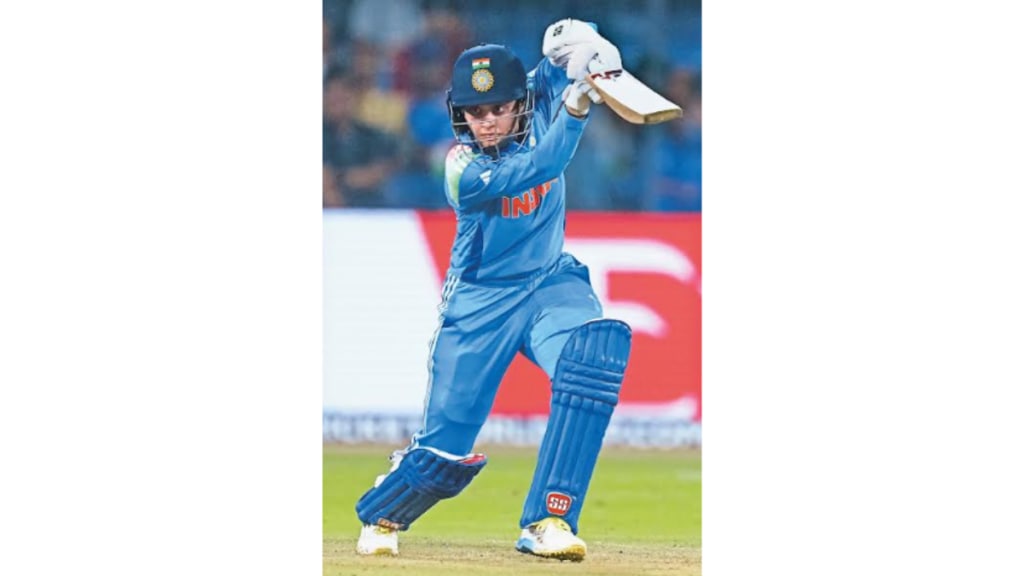India’s Women in Blue might be in a bit of a spot with back-to-back losses in the ongoing ICC women’s World Cup, but off the field, there is much reason to cheer. The first 13 games of the tournament saw over 60 million viewers tune in, according to data from the International Cricket Council and broadcast platform JioHotstar. The growth in digital viewership is a fivefold increase from the women’s World Cup in 2022. The total watch time has hit 7 billion minutes on the OTT platform, up 12 times from 2022. On TV, the first 11 games delivered a reach of 72 million. Clearly women’s cricket is no longer in the shadow of the men’s game in India.
Advertisers have also thrown their weight, with the sponsor line up for the event featuring four Google brands (Gemini, Pay, Pixel and Android), besides Rexona, State Bank of India and the International Gemological Institute. Coca-Cola is on board as official beverage partner.
This year’s World Cup has set new benchmarks for viewership and monetisation of women’s sport, points out Shubhodip Pal, CEO of ITW Universe Integrated Marketing Services. “The ad spending for the tournament has been at least 50% higher than the previous edition, and this is in a year that is packed with men’s cricket events too. It goes to show that advertisers see real value in partnering with women’s cricket. We may see even higher spending for Women’s Premier League (WPL) in 2026,” says Pal.
What is also interesting on the viewership front is that 57-58% of the viewers are male, including hardcore cricket fans. Even non-India games such as the England-Australia game saw around 9 million viewers. Pal explains that though the share of male viewers is less than the 70% mark recorded for men’s cricket, the statistic proves that women’s talent isn’t far behind men.
This World Cup has changed the way advertisers perceive women’s cricket, from a sponsorship opportunity to a storytelling platform, says Ankur Sharma, co-founder of Brandshark. “Brands aren’t just putting logos on jerseys, they’re co-creating narratives around resilience, ambition and everyday heroism. Brands are investing in women’s cricket not as tokenism but because the viewership numbers and sentiment both make sense,” adds Sharma.
Scoring big
In the last few years, brands have moved from token sponsorships to long-term partnerships in women’s cricket, seeing it as a credible platform for high-impact engagement, observes Santosh N, managing partner, D and P Advisory. “The WPL has been a gamechanger, giving women’s cricket prime-time visibility. Rising media coverage, social media traction, and relatable athlete narratives are further fuelling advertiser and viewer interest,” says Santosh.
Brands are conceptualising and executing campaigns tailored specifically for the tournament too, much like the men’s tournaments. Asian Paints for example rolled out its Meri Wali Blue campaign that builds on the legacy of its campaigns for men’s cricket, celebrating India’s women cricket stars along with the fans that cheer them on.
Broadcaster JioStar’s ‘jersey wahi toh jazbaa wahi’ slogan has also underscored the unifying power of the Indian jersey and struck a chord with viewers.
Media fragmentation and the surge of short-form sports content have also helped brands find sharper, more relatable entry points into the women’s cricket ecosystem, notes Yasin Hamidani, director, Media Care Brand Solutions. Consequently, brands are now taking bigger bets and spending more than ever on women’s cricket. “There’s a steady rise in brand investment toward women’s cricket, especially post WPL. Marketers are allocating 15-25% more towards women’s sporting properties compared to previous years. This growth is driven by the expanding fan base, improved broadcast visibility, and stronger ROI on engagement-led campaigns,” explains Hamidani.
Despite the positive signs, experts say that there is much to be done to close the gap between men’s and women’s cricket. Naresh Gupta, co-founder and CSO at Bang In The Middle, observes that though the country is gradually moving away from only movie stars or male cricketers as endorsers, the uptick on brands working with women cricketers is still slow. While female cricketers naturally are a good fit for certain categories like sportswear or personal care, Gupta says that there could be a significant shift if traditionally male categories like auto enlist a woman cricket star for their next big launch.

